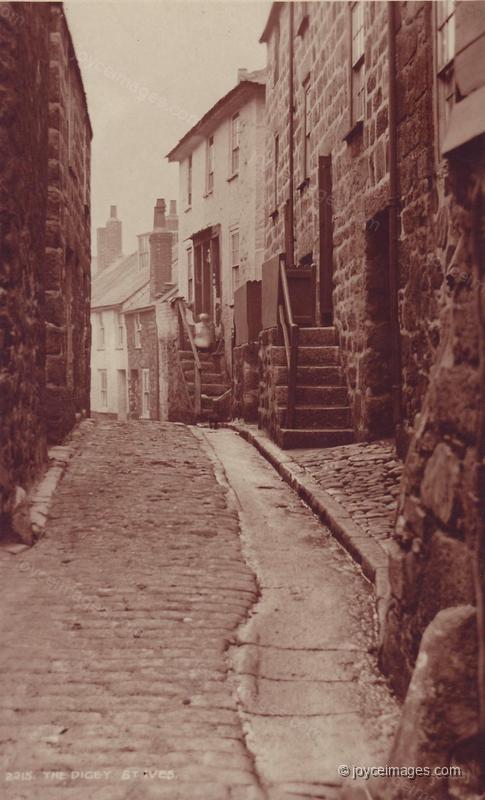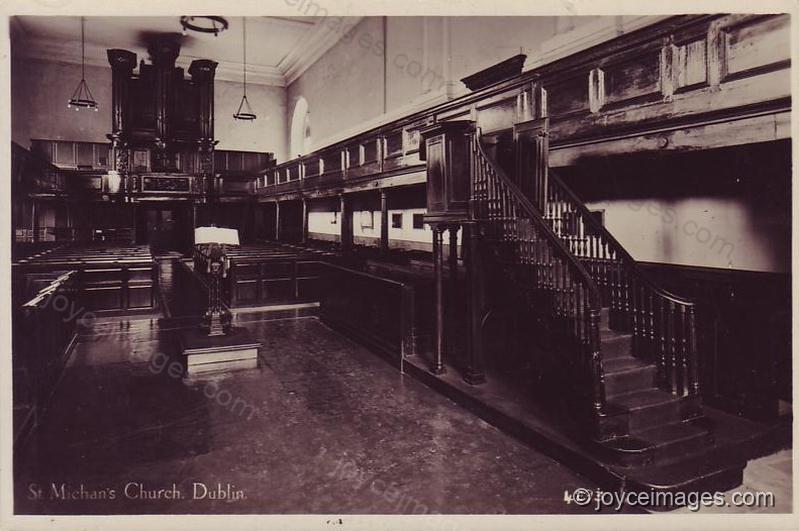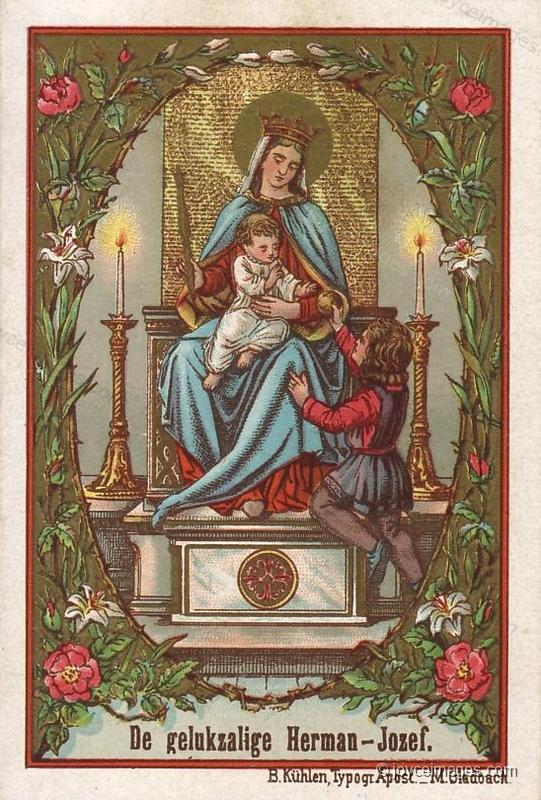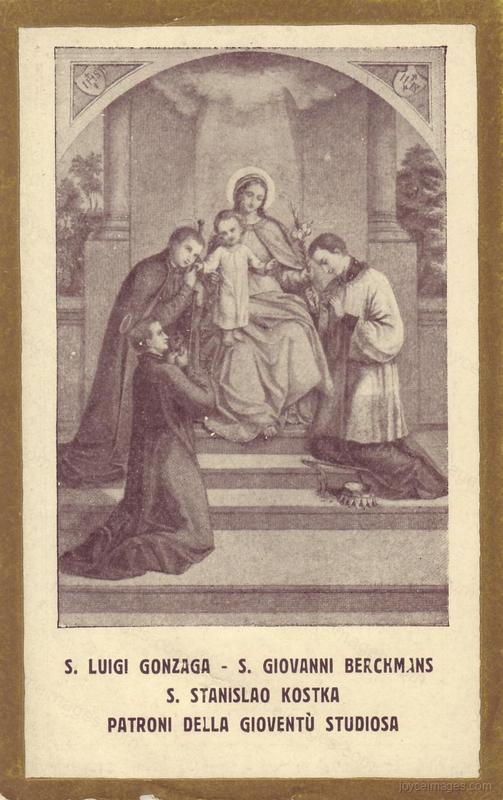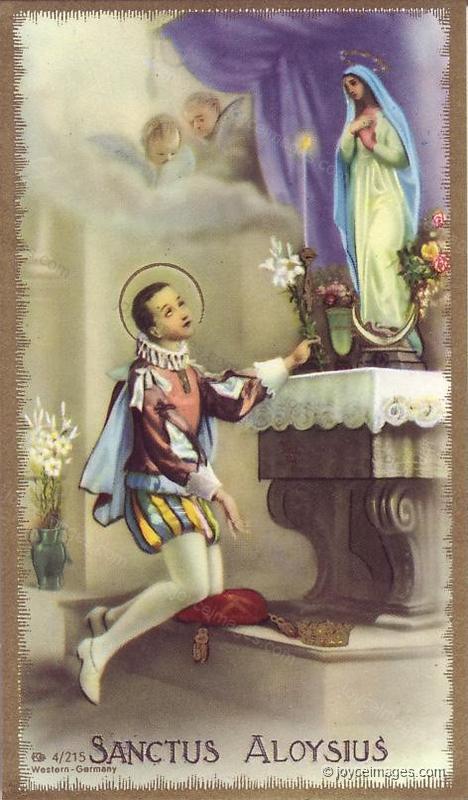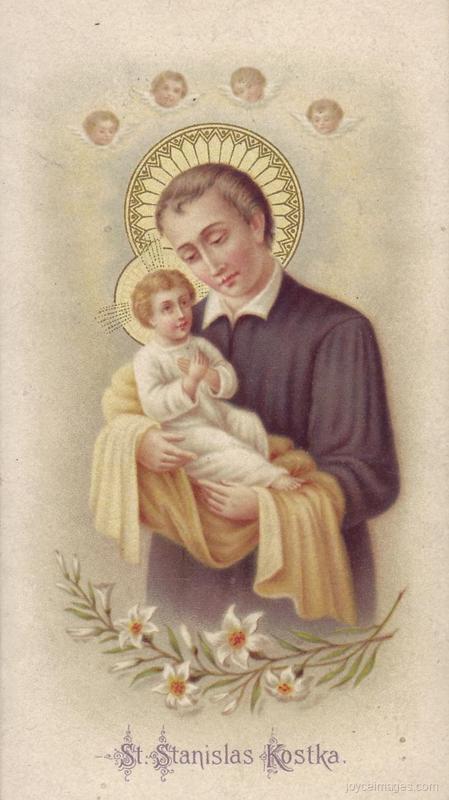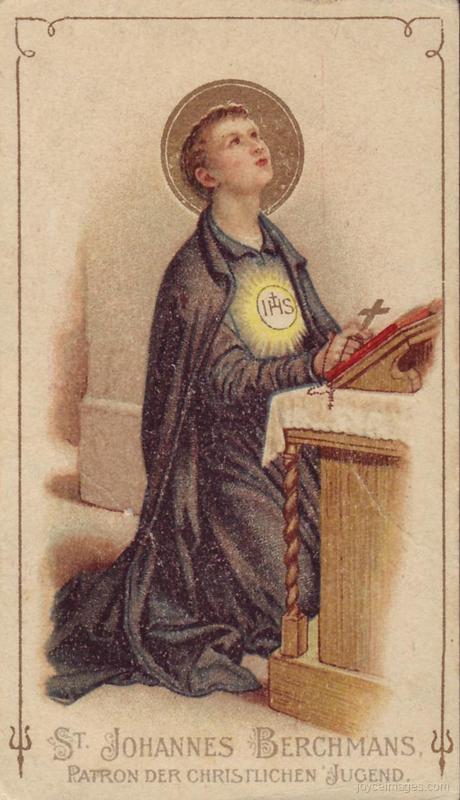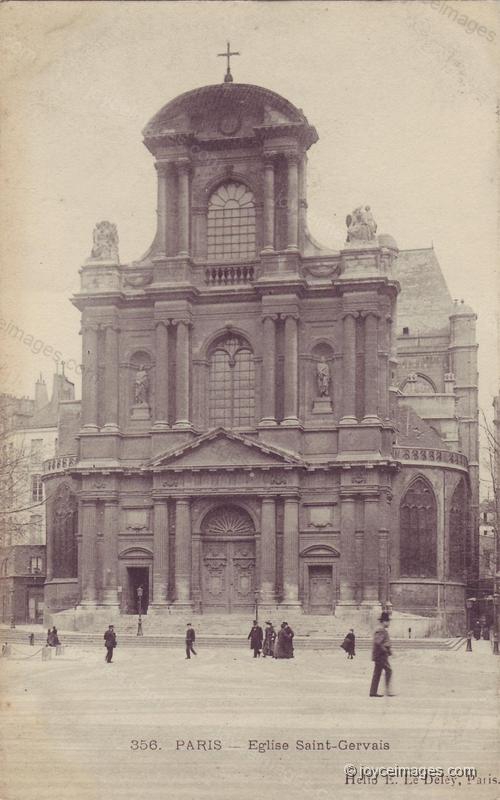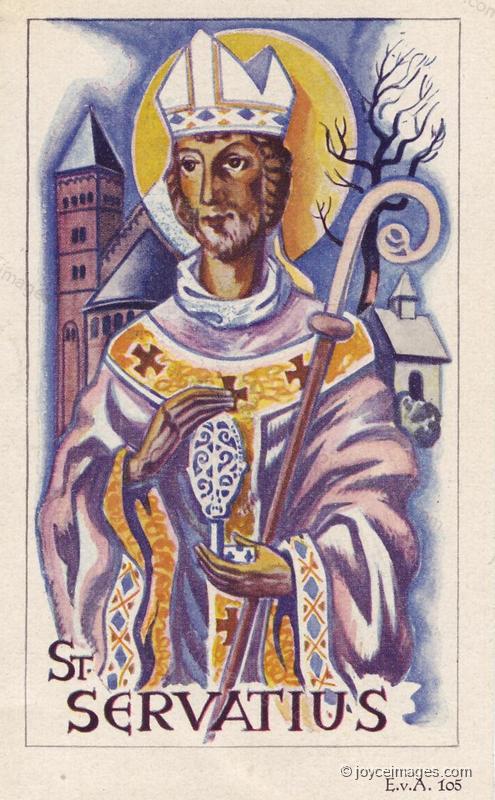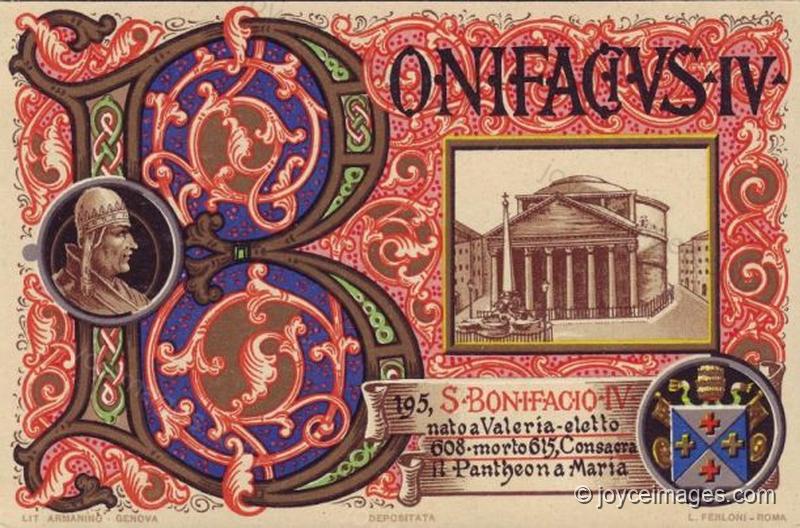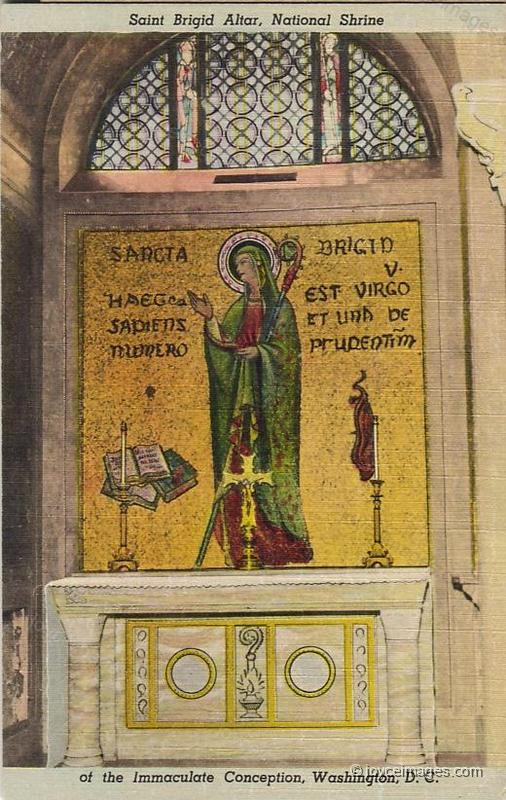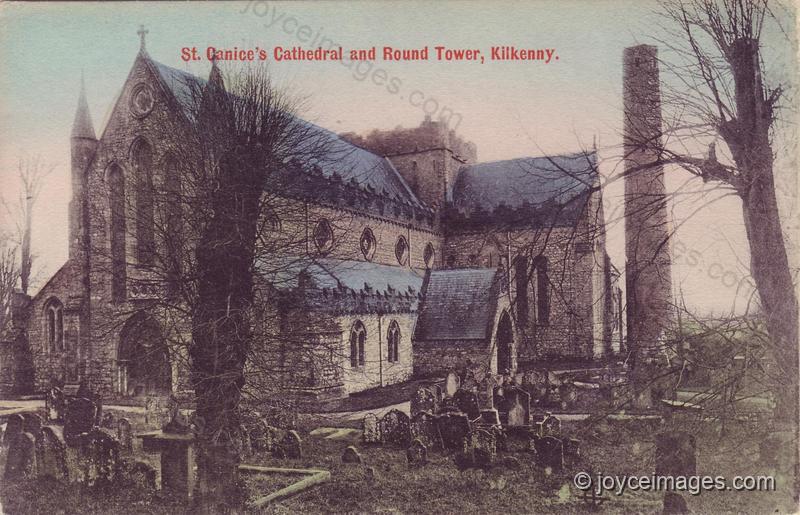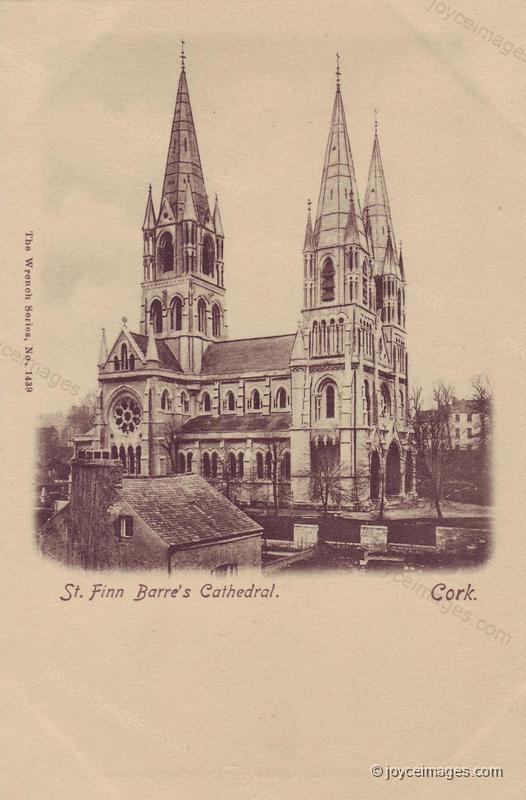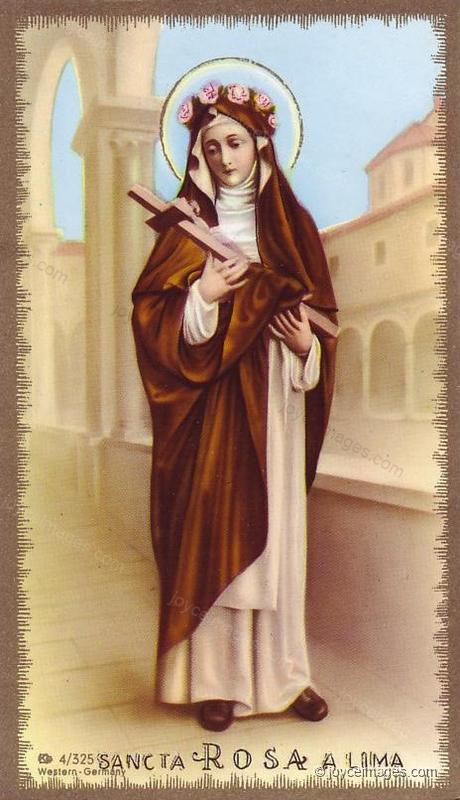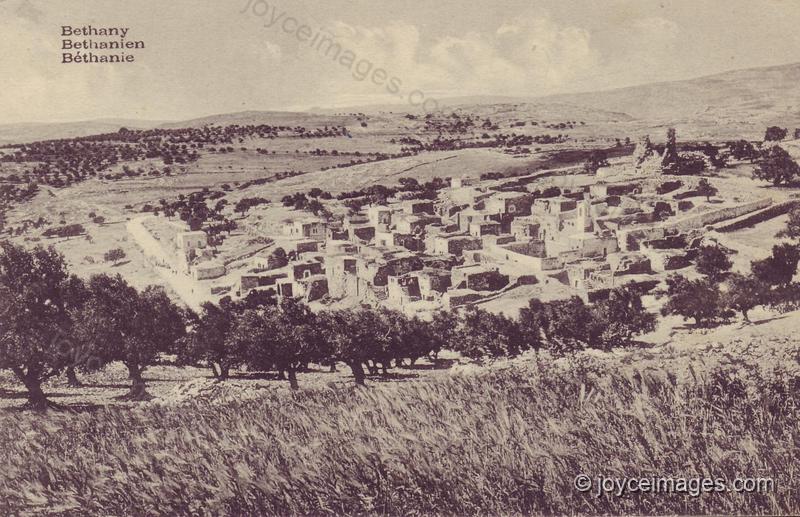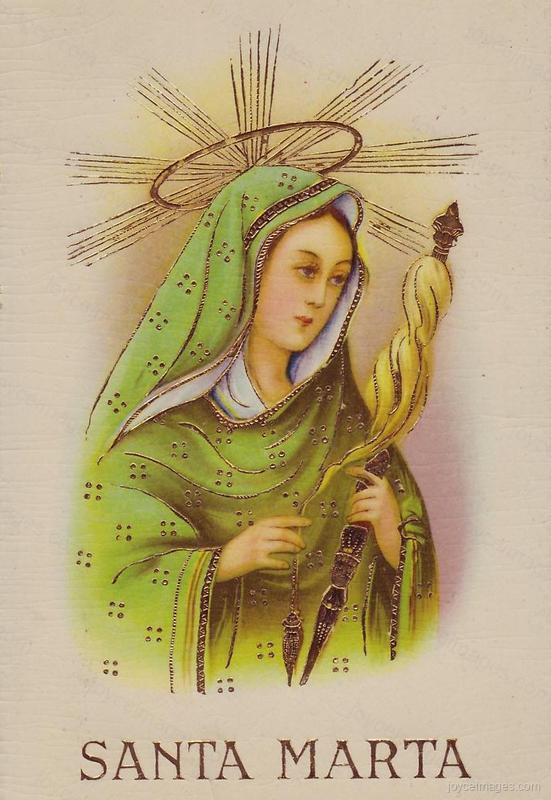"and S. Ives of Brittany" (U12.1702)
S. Ives (Yves) of Brittany (1253 - 1303) was born to a wealthy Breton noble family. From age 14 he studied civil and canon law, philosophy, and theology in Paris and Orleans. He practiced law in both civil and ecclesiastical courts, often defending the poor without charge, and ministering to them in prison while they awaited trial. He practiced great personal ascetism, often fasting, and wearing a hair shirt under his clothing. He fought the state over taxes and the rights of the Church. He was known as an incorruptible judge, refusing then common bribes, and working to settle claims out of court to save the litigants time and money. He was ordained in 1284, and resigned his legal position in 1287 to tend to his parishioners at Tredez and Lovannec. He built a hospital from his own funds, tended the poor, and gave away the harvests from his land to feed them. Miracle worker, he is said to have fed hundreds from a single loaf of bread. Represented as a lawyer enthroned between rich and poor litigants; holding a book, with an angel near his head and a lion at his feet; or as a lawyer surrounded by doves (the Holy Spirit). Feast May 19. This PC shows the village of St Ives in Cornwall.
S. Ives (Yves) of Brittany (1253 - 1303) was born to a wealthy Breton noble family. From age 14 he studied civil and canon law, philosophy, and theology in Paris and Orleans. He practiced law in both civil and ecclesiastical courts, often defending the poor without charge, and ministering to them in prison while they awaited trial. He practiced great personal ascetism, often fasting, and wearing a hair shirt under his clothing. He fought the state over taxes and the rights of the Church. He was known as an incorruptible judge, refusing then common bribes, and working to settle claims out of court to save the litigants time and money. He was ordained in 1284, and resigned his legal position in 1287 to tend to his parishioners at Tredez and Lovannec. He built a hospital from his own funds, tended the poor, and gave away the harvests from his land to feed them. Miracle worker, he is said to have fed hundreds from a single loaf of bread. Represented as a lawyer enthroned between rich and poor litigants; holding a book, with an angel near his head and a lion at his feet; or as a lawyer surrounded by doves (the Holy Spirit). Feast May 19. This PC shows the village of St Ives in Cornwall.
"and the three patrons of holy youth" (U12.1703)
Saints Aloysius Gonzaga, Stanislaus Kostka, and John Berchmans are often grouped together as the patron saints of holy youth, or of young students. All three were Jesuits, born within a few years of each other, and died very young.
Saints Aloysius Gonzaga, Stanislaus Kostka, and John Berchmans are often grouped together as the patron saints of holy youth, or of young students. All three were Jesuits, born within a few years of each other, and died very young.
"S. Aloysius Gonzaga" (U12.1704)
S. Aloysius Gonzaga (1568 - 1591) was of Italian nobility, the son of a compulsive gambler. He was trained from age four as a soldier and courtier. He suffered from kidney disease which he considered a blessing as it left him bed-ridden with time for prayer. While still a boy himself, he taught catechism to poor boys. At age 18 he signed away his legal claim to his family's lands and title to his brother, and became a Jesuit novice. He tended plague victims in Rome during the outbreak of 1591. Feast June 21.
S. Aloysius Gonzaga (1568 - 1591) was of Italian nobility, the son of a compulsive gambler. He was trained from age four as a soldier and courtier. He suffered from kidney disease which he considered a blessing as it left him bed-ridden with time for prayer. While still a boy himself, he taught catechism to poor boys. At age 18 he signed away his legal claim to his family's lands and title to his brother, and became a Jesuit novice. He tended plague victims in Rome during the outbreak of 1591. Feast June 21.
"and S. Stanislaus Kostka" (U12.1704)
S. Stanislaus Kostka (1550 - 1568) was of Polish nobility, the son of a senator. He attended the Viennese Jesuit college from age 14. Against his family's will, he travelled on foot to Rome and jointed the Society of Jesus in Rome on his 17th birthday (1567). Always of delicate health, he died of a fabrile illness. Represented receiving Holy Communion from the hands of angels, or holding the Infant Jesus. Feast November 13.
S. Stanislaus Kostka (1550 - 1568) was of Polish nobility, the son of a senator. He attended the Viennese Jesuit college from age 14. Against his family's will, he travelled on foot to Rome and jointed the Society of Jesus in Rome on his 17th birthday (1567). Always of delicate health, he died of a fabrile illness. Represented receiving Holy Communion from the hands of angels, or holding the Infant Jesus. Feast November 13.
"and S. John Berchmans" (U12.1704)
S. John Berchmans (1599 - 1621) was born in Driest (Belgium). He was the son of a shoemaker, and one of five children (three entered religious life). He spent much of his time caring for his sick mother, and showed great devotion to his position as an altar boy. He became a Jesuit novice in 1616. He studied at the Jesuit College at Malines, then philosophy in Rome. His dream was teaching migrants (he studied all the chief languages of Europe), and later working in China. He died before being ordained, of unknown causes, soon after a public debate on faith. Represented as he died, holding his rosary, crucifix, and the rule book of the Jesuit order. Feast November 26.
S. John Berchmans (1599 - 1621) was born in Driest (Belgium). He was the son of a shoemaker, and one of five children (three entered religious life). He spent much of his time caring for his sick mother, and showed great devotion to his position as an altar boy. He became a Jesuit novice in 1616. He studied at the Jesuit College at Malines, then philosophy in Rome. His dream was teaching migrants (he studied all the chief languages of Europe), and later working in China. He died before being ordained, of unknown causes, soon after a public debate on faith. Represented as he died, holding his rosary, crucifix, and the rule book of the Jesuit order. Feast November 26.
"and the saints Gervasius," (U12.1705)
S. Gervasius (2c.) was the son of S. Vitalis and S. Valeria from Milan, and had a twin brother named Protase. The brothers are considered the first martyrs of Milan. Little is known about them except that Gervasius was beaten to death with a lead-tipped whip (ca. 165), and Protase was beheaded. S. Ambrose, guided by a vision, unearthed their remains in 386. Gervasius is represented as a youth holding a lead-tipped scourge in one hand and a sword in the other, or with S. Protase. Feast June 19. This PC shows S. Gervais church in Paris.
S. Gervasius (2c.) was the son of S. Vitalis and S. Valeria from Milan, and had a twin brother named Protase. The brothers are considered the first martyrs of Milan. Little is known about them except that Gervasius was beaten to death with a lead-tipped whip (ca. 165), and Protase was beheaded. S. Ambrose, guided by a vision, unearthed their remains in 386. Gervasius is represented as a youth holding a lead-tipped scourge in one hand and a sword in the other, or with S. Protase. Feast June 19. This PC shows S. Gervais church in Paris.
"and Bonifacius" (U12.1705)
There are several S. Bonifacius but Pope Bonifacius IV (c.550 - 608) is a likely candidate, as he was a contemporary of, and corresponded with S. Columba. He was a student of S. Gregory the great, then a Benedictine monk in Rome. He was chosen 67th Pope in 608. He converted the Roman temple of the old gods, the Pantheon, to a Christian church dedicated to Our Lady and all the saints, supported the expansion of the faith into England, encouraged reforms among the clergy, and balanced it with improvements in their living and working conditions. Feast May 8.
There are several S. Bonifacius but Pope Bonifacius IV (c.550 - 608) is a likely candidate, as he was a contemporary of, and corresponded with S. Columba. He was a student of S. Gregory the great, then a Benedictine monk in Rome. He was chosen 67th Pope in 608. He converted the Roman temple of the old gods, the Pantheon, to a Christian church dedicated to Our Lady and all the saints, supported the expansion of the faith into England, encouraged reforms among the clergy, and balanced it with improvements in their living and working conditions. Feast May 8.
"and S. Canice of Kilkenny" (U12.1706)
S. Canice (525-599) was Irish, the son of a royal bard and a woman named Maul. He was a student of S. Kieran of Conmacnoise, S. Comgall of Bangor, and S. Mobhi, and was ordained in 545. He was a monk in Glasnevin in 550. He founded the monastery of Agahanoe and served as its abbot, and may have founded the monastery of Kilkenny. He went as a missionary to Scotland with S. Columba in 565, and was known as an effective preacher. He copied out the four Gospels, with a commentary. Legend says that with a stern word he chased away all the mice on the island of Inish Ubdain, that on En Irish he ordered the birds to stop singing during Mass, and that when he lived as a hermit, a local stag would hold his Bible in its antlers. Feast October 11. The city of Kilkenny is named for him.
S. Canice (525-599) was Irish, the son of a royal bard and a woman named Maul. He was a student of S. Kieran of Conmacnoise, S. Comgall of Bangor, and S. Mobhi, and was ordained in 545. He was a monk in Glasnevin in 550. He founded the monastery of Agahanoe and served as its abbot, and may have founded the monastery of Kilkenny. He went as a missionary to Scotland with S. Columba in 565, and was known as an effective preacher. He copied out the four Gospels, with a commentary. Legend says that with a stern word he chased away all the mice on the island of Inish Ubdain, that on En Irish he ordered the birds to stop singing during Mass, and that when he lived as a hermit, a local stag would hold his Bible in its antlers. Feast October 11. The city of Kilkenny is named for him.
"and S. Jarlath of Tuam and S. Finbarr" (U12.1706)
S. Finbarr (Finbar, Fionnbharr, or Bairre) was Irish (c.550-623). He was the son of an artisan named Amergin and a lady of the Irish royal court. He had very light hair, which led to the nickname Fionnbharr = white hair. He was educated at Kilmacahil monastery, Kilkenny. He made multiple pilgrimages to Rome, visiting S. David of Wales on one trip. He preached throughout southern Ireland, and possibly in Scotland. He founded a monastery on the river Lee; it developed into the city of Cork, and he was its first bishop. Legend says that the sun did not set for two weeks after his death. Feast September 25. This PC shows S. Finbar's cathedral in Cork, where his remains are interred.
S. Finbarr (Finbar, Fionnbharr, or Bairre) was Irish (c.550-623). He was the son of an artisan named Amergin and a lady of the Irish royal court. He had very light hair, which led to the nickname Fionnbharr = white hair. He was educated at Kilmacahil monastery, Kilkenny. He made multiple pilgrimages to Rome, visiting S. David of Wales on one trip. He preached throughout southern Ireland, and possibly in Scotland. He founded a monastery on the river Lee; it developed into the city of Cork, and he was its first bishop. Legend says that the sun did not set for two weeks after his death. Feast September 25. This PC shows S. Finbar's cathedral in Cork, where his remains are interred.
"and S. Pappin of Ballymun and Brother Aloysius Pacificus and Brother Louis Bellicosus and the saints Rose of Lima" (U12.1708)
S. Rose of Lima (1586 - 1617) was born as Isabel to Spanish immigrants to the New World in Peru. A beautiful girl and devoted daughter, she made a vow of chastity, ruining her face face with pepper and lye. Lived and meditated in a garden, raising vegetables and embroidering to support her family and help the other poor. She became a Dominican tertiary in 1606, and was a mystic and a visonary. She received invisible stigmata, and generally suffered from assorted physical and mental ailments. She is the first saint born in the Americas, and a founder of social work in Peru. She is represented as a Dominican with Peru anchor, flowers (often a crown of roses), or accompanied by the Holy Infant. Feast August 23.
S. Rose of Lima (1586 - 1617) was born as Isabel to Spanish immigrants to the New World in Peru. A beautiful girl and devoted daughter, she made a vow of chastity, ruining her face face with pepper and lye. Lived and meditated in a garden, raising vegetables and embroidering to support her family and help the other poor. She became a Dominican tertiary in 1606, and was a mystic and a visonary. She received invisible stigmata, and generally suffered from assorted physical and mental ailments. She is the first saint born in the Americas, and a founder of social work in Peru. She is represented as a Dominican with Peru anchor, flowers (often a crown of roses), or accompanied by the Holy Infant. Feast August 23.
"and of Viterbo and S. Martha of Bethany" (U12.1708)
Bethany (shown on this PC) is a town near Jerusalem, on the southeastern slope of the Mount of Olives.
Bethany (shown on this PC) is a town near Jerusalem, on the southeastern slope of the Mount of Olives.
